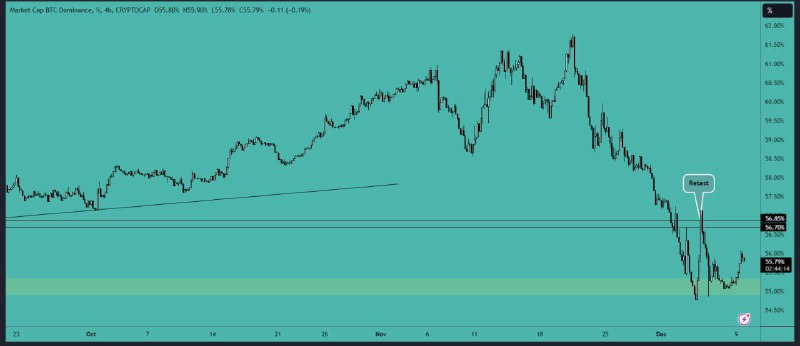RG Analitics 🟢 [PRIVATE CHANNEL🔒]
Filtering the Global Crypto Analytics (stock)
Analyze, Think, Compare = Take profit!
We respond in the chat @invest_club
Community chat: https://t.me/hamster_kombat_chat_2
Website: https://hamster.network
Twitter: x.com/hamster_kombat
YouTube: https://www.youtube.com/@HamsterKombat_Official
Bot: https://t.me/hamster_kombat_bot
Last updated 9 months ago
Your easy, fun crypto trading app for buying and trading any crypto on the market.
📱 App: @Blum
🤖 Trading Bot: @BlumCryptoTradingBot
🆘 Help: @BlumSupport
💬 Chat: @BlumCrypto_Chat
Last updated 1 year, 2 months ago
Turn your endless taps into a financial tool.
Join @tapswap_bot
Collaboration - @taping_Guru
Last updated 9 months, 2 weeks ago
 :](/media/attachments/rg_/rg_analitics/13192.jpg)
Here's the Analysis of #YFI :
#YFI had a very huge rally to the upside and rejected hard from the key resistance area (grey box) around $14,500 - $15,000. Now, price is going though the retracement phrase and kept on dropping towards the H4 Support area around $11,150 area. If price sustains over the level, then we can see a rally towards the previous Highs and can expect a breakout too.

Bitcoin dominance rebounded from the support level due to Bitcoin's volatility. We may witness some corrections in altcoins and a test of the support zone. This could be a good opportunity to accumulate altcoins during the correction. Once Bitcoin breaks above $100,000 and maintains that level, we will likely see a continuation of the downtrend in Bitcoin dominance. The support and resistance areas remain unchanged.
What Are TEEs?
Trusted Execution Environments (TEEs) are secure areas within a main processor. They provide a protected space where sensitive code and data can operate without fear of tampering or observation from the outside world. In the context of web3, think of TEEs as impenetrable vaults within nodes or validators, safeguarding private keys, confidential smart contract data, and critical decentralized application (dApp) operations from potential threats in the broader network environment.
The concept of TEEs isn't new. It originated in the mid-2000s when the Open Mobile Terminal Platform (OMTP) defined them in their "Advanced Trusted Environment: OMTP TR1" standard. This standard outlined two security profiles: one targeting software attacks and another addressing both software and hardware threats.
At their core, TEEs consist of two main components: a hardware isolation mechanism and a secure operating system running on top of that isolation. This combination creates a robust barrier between the TEE and the rest of the system. Only trusted applications have access to the full power of the device's processor, peripherals, and memory within this protected zone. Meanwhile, the hardware isolation shields these resources from user-installed apps running in the main operating system.
TEEs rely on a "hardware root of trust" to prevent simulation by user-controlled software. This root of trust is typically a set of private keys embedded directly into the chip during manufacturing. These keys are immutable and serve as the foundation for the TEE's security model.
TEEs have become increasingly used in web3 to enable privacy-preserving smart contracts and enhance the security of decentralized applications. This trend has led to the development of TEE-based "confidential computing" platforms specifically designed for blockchains. They allow developers to build dApps that can process sensitive data off-chain while still maintaining the trust and transparency benefits of blockchains.
What Are They Used For in Web2?
TEEs have a wide range of applications across various industries, and are included as standard in all new NVIDIA H100 GPUs. They're commonly used in Digital Rights Management (DRM) to protect high-value content like 4K movies or premium audio from unauthorized access or copying. In the realm of mobile financial services, TEEs secure mobile wallets, contactless payments, and point-of-sale terminals by safeguarding sensitive financial data.
Authentication is another key use case for TEEs. They provide a secure environment for biometric identification methods such as facial recognition, fingerprint scanning, and voice authorization. Enterprises and government organizations leverage TEEs to handle confidential information on mobile devices and server infrastructure securely.
In the world of software development, TEEs enable secure modular programming. They allow for the creation of isolated, secure modules within larger software systems, enhancing overall security and reliability. With the rise of digital assets, TEEs are increasingly used to implement secure crypto-wallets, offering enhanced protection for storing and managing tokens.
#AUCTION another call given and achieved the 2nd target and 47% in profit and with 10x leverage its around 470% in profits
#AUCTION had a very great pump and achieved all the target. Trade gave profit around 84% with 10x its around 840% profits.
Enjoy
? Auction Hits $23.66 – Massive Gains!
Auction surged to an impressive high of $23.66, delivering incredible profits for our community! ?
First Entry: ($12.85) : 841.3% profit with 10x leverage
Second Entry ($16.15) : 464.9% profit with 10x leverage
This showcases the power of precision signals and strategic plays. Stay tuned for more top-tier opportunities!
Keep the printer running ??
Here
What Is a Transaction ID (TXID)? A transaction ID (TXID) is the unique identification number of each blockchain transaction. It is also sometimes called transaction hash and is a string of letters and numbers that every blockchain transaction possesses. This…
Community chat: https://t.me/hamster_kombat_chat_2
Website: https://hamster.network
Twitter: x.com/hamster_kombat
YouTube: https://www.youtube.com/@HamsterKombat_Official
Bot: https://t.me/hamster_kombat_bot
Last updated 9 months ago
Your easy, fun crypto trading app for buying and trading any crypto on the market.
📱 App: @Blum
🤖 Trading Bot: @BlumCryptoTradingBot
🆘 Help: @BlumSupport
💬 Chat: @BlumCrypto_Chat
Last updated 1 year, 2 months ago
Turn your endless taps into a financial tool.
Join @tapswap_bot
Collaboration - @taping_Guru
Last updated 9 months, 2 weeks ago
 :](/media/attachments/rg_/rg_analitics/12978.jpg)